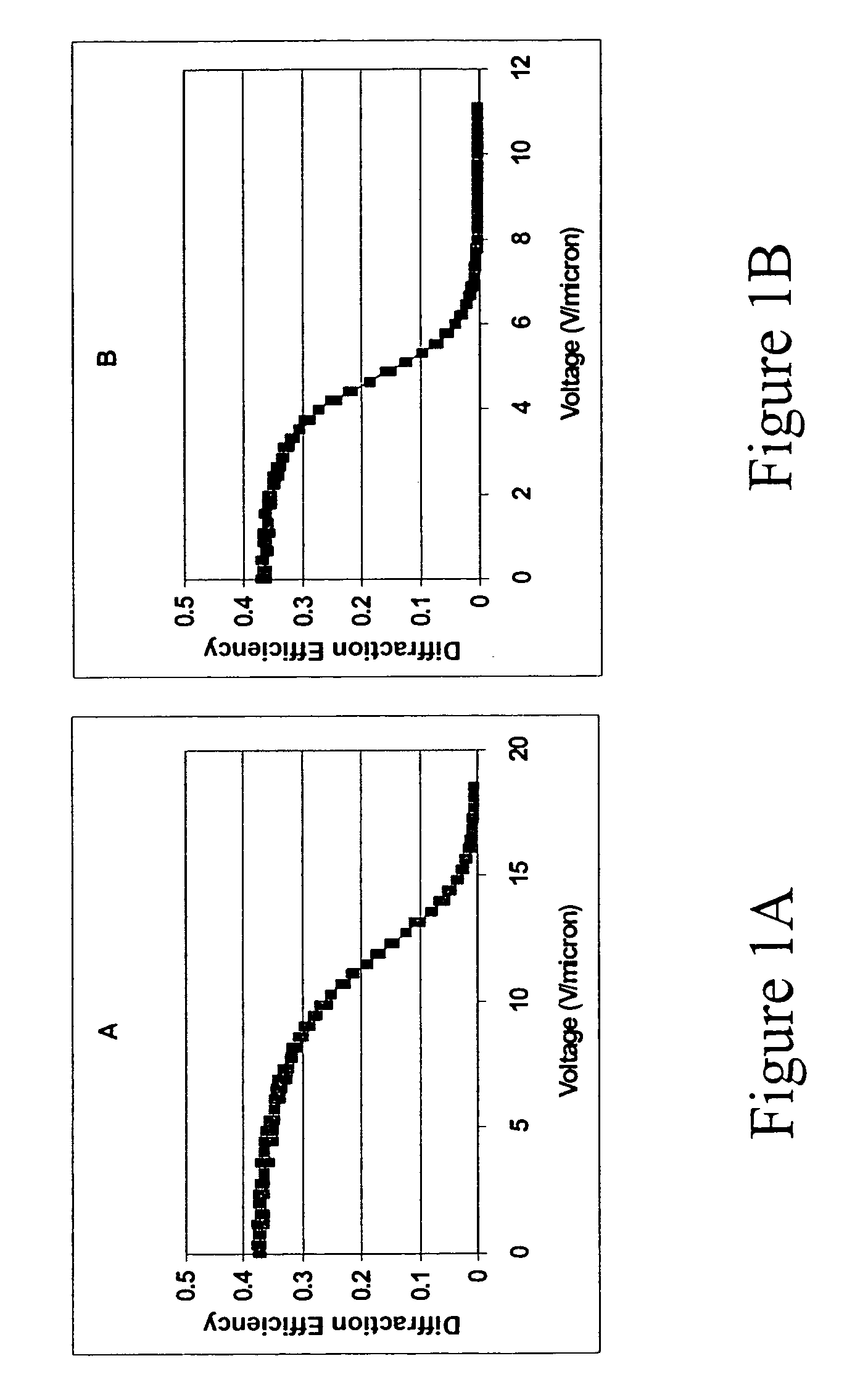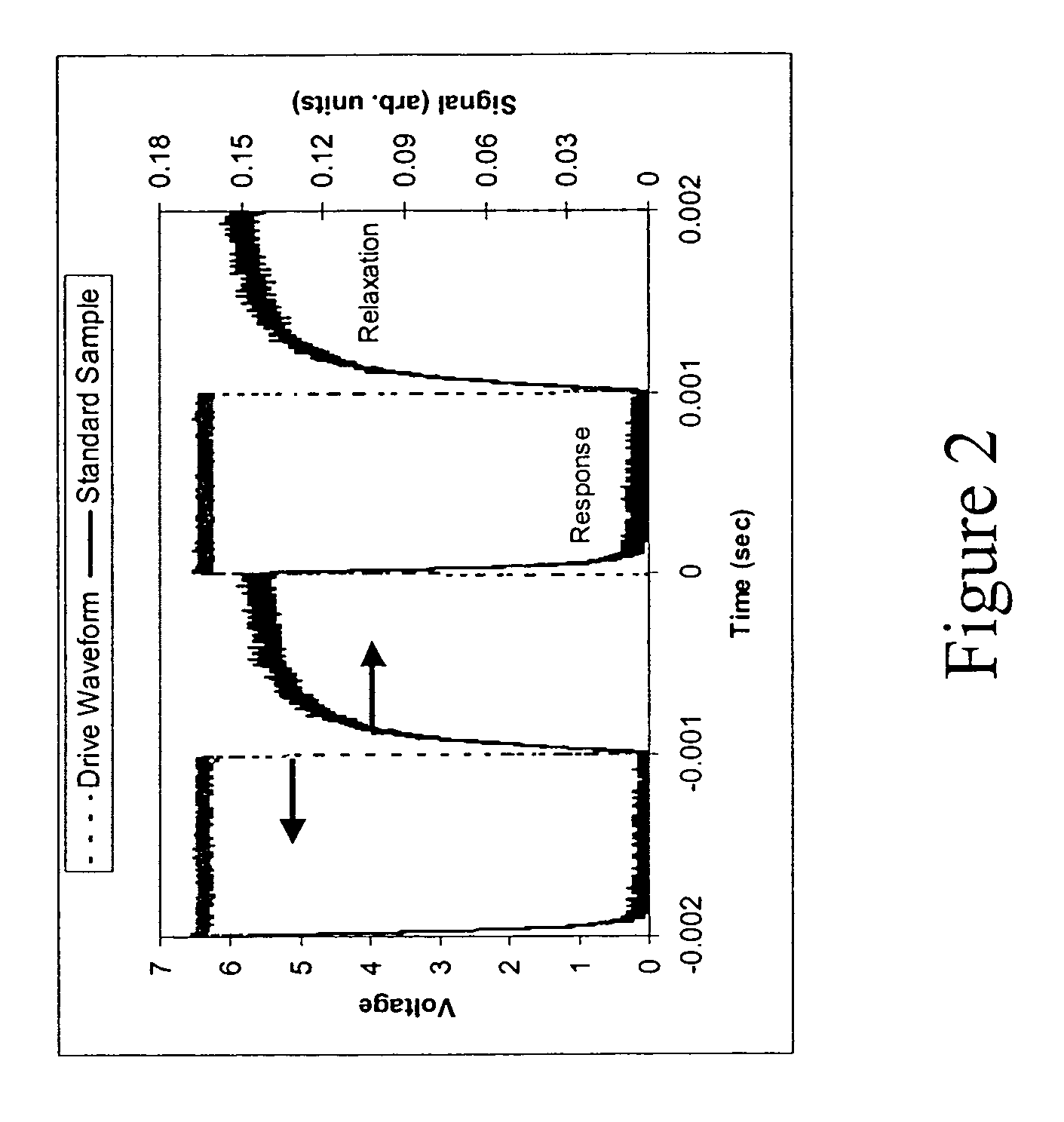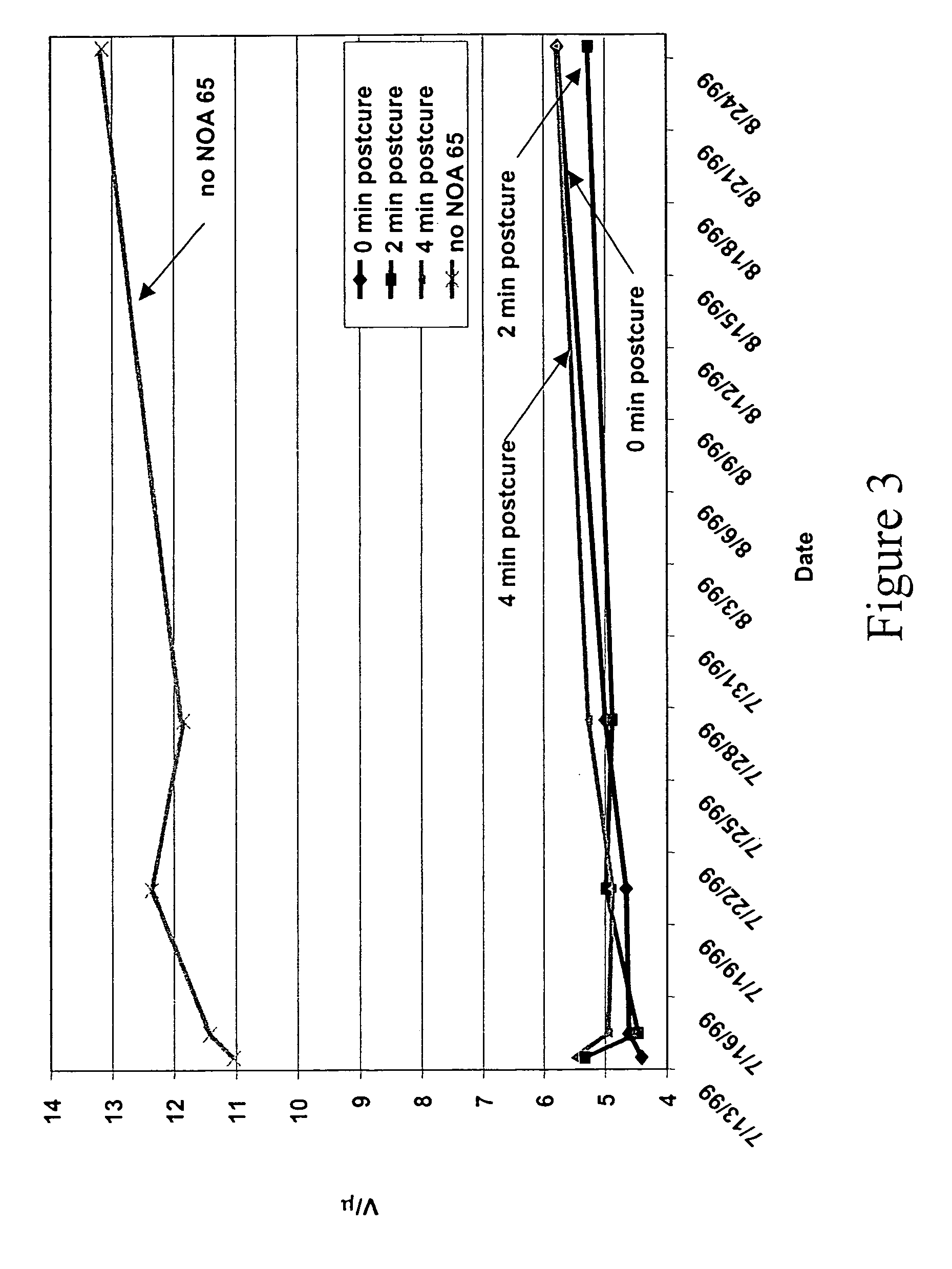Tailoring material composition for optimization of application-specific switchable holograms
a technology of switchable holograms and compositions, applied in the field of photopolymerizable materials, can solve problems such as haz
- Summary
- Abstract
- Description
- Claims
- Application Information
AI Technical Summary
Benefits of technology
Problems solved by technology
Method used
Image
Examples
Embodiment Construction
[0032]As switchable holographic materials and devices near application in the markets discussed above, it has become clear that several performance parameters are critical. Specifically, parameters listed in Table 1 require control and independent optimization for devices to meet the demanding requirements of anticipated applications in the telecom and display industries. Such control and optimization of switchable HOEs properties will result in products able to meet the application-specific needs of customers. The embodiments described herein describe the precise control and optimization of parameters specific to individual applications. Such tailoring is achieved via variation of the qualities listed in Table 1 through a combination of material compositions and control of molecular diffusion, phase separation, morphology, and other processing aspects during the fabrication of switchable holograms.
[0033]
TABLE 1Performance ParametersMaterials / Process ControlHazeLC droplet sizeSwitch...
PUM
| Property | Measurement | Unit |
|---|---|---|
| haze | aaaaa | aaaaa |
| diameter | aaaaa | aaaaa |
| droplet diameters | aaaaa | aaaaa |
Abstract
Description
Claims
Application Information
 Login to View More
Login to View More - R&D
- Intellectual Property
- Life Sciences
- Materials
- Tech Scout
- Unparalleled Data Quality
- Higher Quality Content
- 60% Fewer Hallucinations
Browse by: Latest US Patents, China's latest patents, Technical Efficacy Thesaurus, Application Domain, Technology Topic, Popular Technical Reports.
© 2025 PatSnap. All rights reserved.Legal|Privacy policy|Modern Slavery Act Transparency Statement|Sitemap|About US| Contact US: help@patsnap.com



